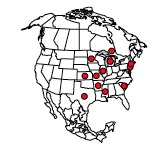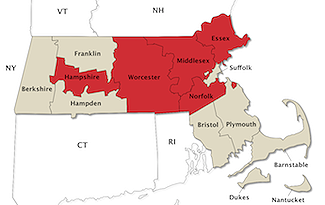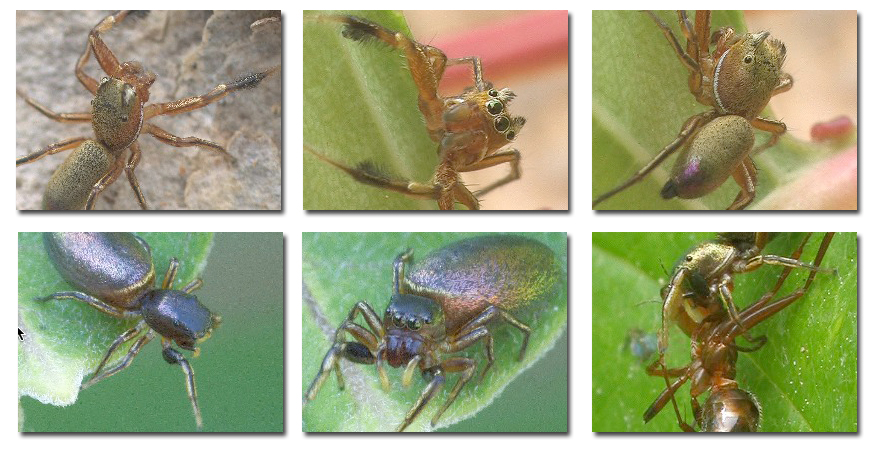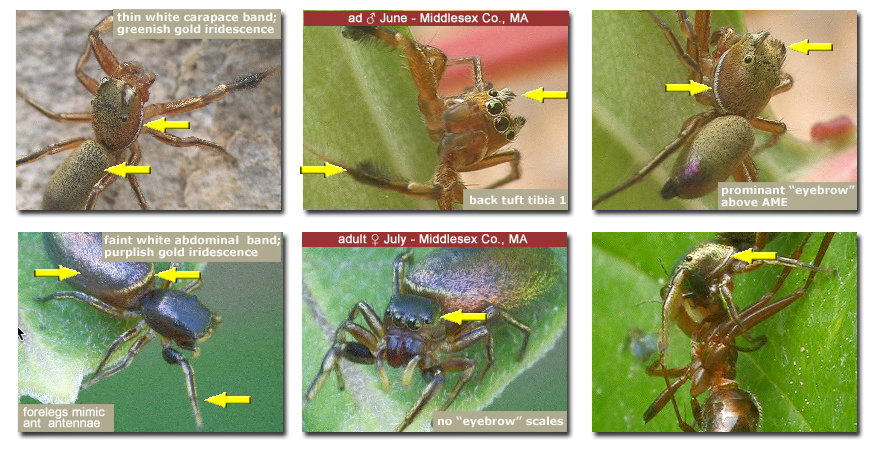Tutelina elegans (Hentz, 1846) - Jumping Spider

Richman, Cutler & Hill 2012
There are those who claim that ants run the world, a claim buttressed by a good deal of evidence. One measure of this group's success are the numerous arthropods that mimic ants. Typically the mimic's morphology has evolved to mirror the model (see Phidippus cardinalis and Synemosyna formosa pages) and by doing so it gains some measure of protection from would-be predators. But not all mimicry functions as a protective adaptation. The adaptive "disguise" of aggressive mimics increases their success as predators. Two close relatives of Tutelina elegans (T. similis and T. formica) have both been shown to be predators of ants. The video shows a T. elegans female with an ant that is most likely Formica dolosa. So it may be the case that Tuelina mimicry is, at least in part, an adaptation that serves to increase the jumpers food capturing success.
David Lubertazzi pers. comm. ; Wing, 1983; The Kentucky Critter Files - University of Kentucky, 2004
Massachusetts - First State / County Records

- ♦ *BSNH - Icius elegans - Essex (Beverly), Middlesex (Middlesex Fells - Malden), Norfolk (Sharon) - Bryant, 1908: 96
- ♦ C. Eiseman - Tutelina elegans - Hampshire (Pelham), July 2011 - BugGuide node #541878
- ♦ T. Murray - T. e. - Worcester (Harvard), July 2004 - BugGuide node #12814
- ♦ Connecticut - I. e. - Kaston, 1948: 488, f. 1809-1811, 1833-1837, 20 records
- *See Bryant, 1908
Peckham, G. W. & Peckham, E. G. 1909. Revision of the Attidae of North America. Transactions of the Wisconsin Academy of Sciences, Arts and Letters 16(1): 355-655.



